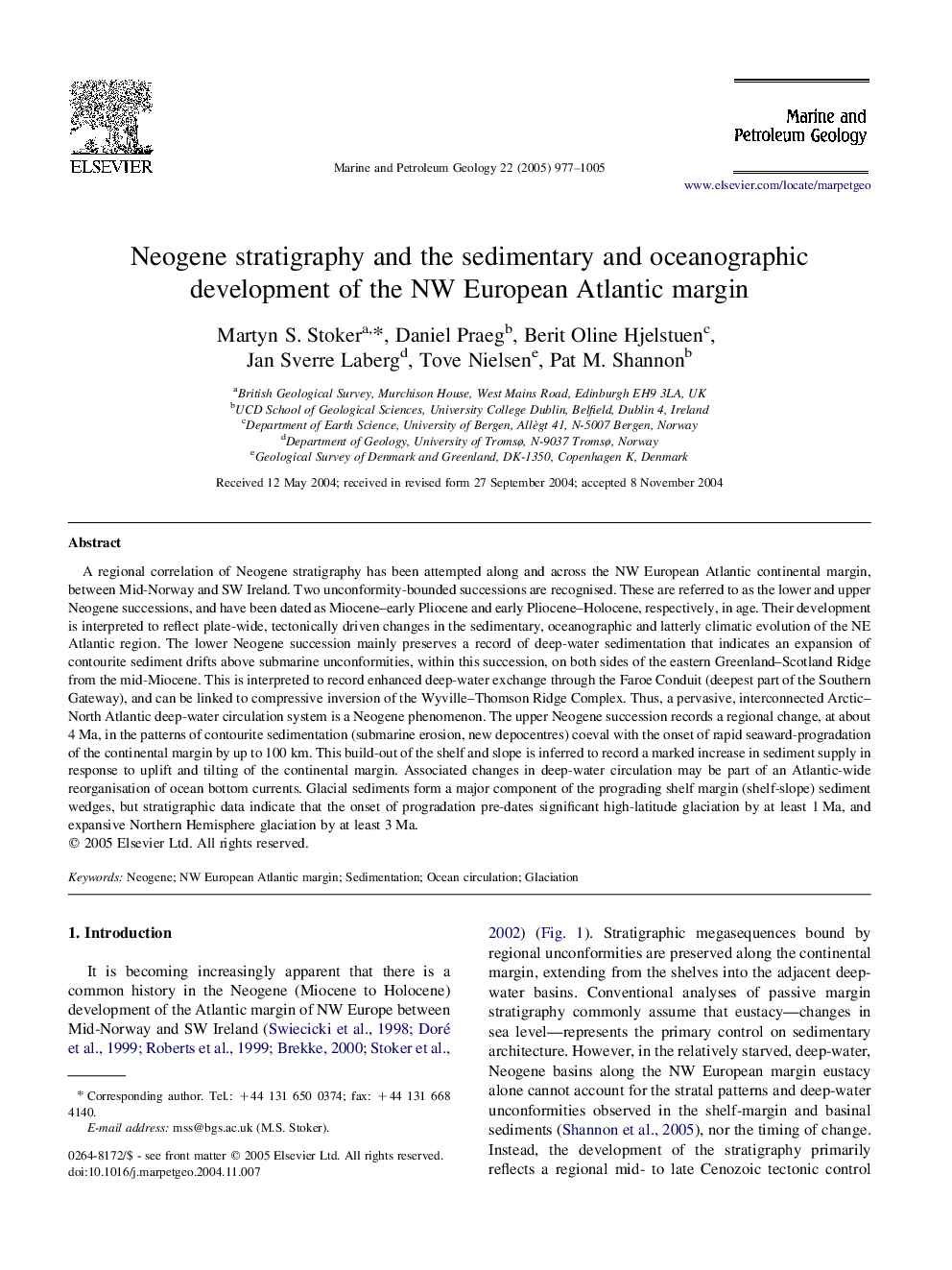| Article ID | Journal | Published Year | Pages | File Type |
|---|---|---|---|---|
| 9528510 | Marine and Petroleum Geology | 2005 | 29 Pages |
Abstract
A regional correlation of Neogene stratigraphy has been attempted along and across the NW European Atlantic continental margin, between Mid-Norway and SW Ireland. Two unconformity-bounded successions are recognised. These are referred to as the lower and upper Neogene successions, and have been dated as Miocene-early Pliocene and early Pliocene-Holocene, respectively, in age. Their development is interpreted to reflect plate-wide, tectonically driven changes in the sedimentary, oceanographic and latterly climatic evolution of the NE Atlantic region. The lower Neogene succession mainly preserves a record of deep-water sedimentation that indicates an expansion of contourite sediment drifts above submarine unconformities, within this succession, on both sides of the eastern Greenland-Scotland Ridge from the mid-Miocene. This is interpreted to record enhanced deep-water exchange through the Faroe Conduit (deepest part of the Southern Gateway), and can be linked to compressive inversion of the Wyville-Thomson Ridge Complex. Thus, a pervasive, interconnected Arctic-North Atlantic deep-water circulation system is a Neogene phenomenon. The upper Neogene succession records a regional change, at about 4Â Ma, in the patterns of contourite sedimentation (submarine erosion, new depocentres) coeval with the onset of rapid seaward-progradation of the continental margin by up to 100Â km. This build-out of the shelf and slope is inferred to record a marked increase in sediment supply in response to uplift and tilting of the continental margin. Associated changes in deep-water circulation may be part of an Atlantic-wide reorganisation of ocean bottom currents. Glacial sediments form a major component of the prograding shelf margin (shelf-slope) sediment wedges, but stratigraphic data indicate that the onset of progradation pre-dates significant high-latitude glaciation by at least 1Â Ma, and expansive Northern Hemisphere glaciation by at least 3Â Ma.
Related Topics
Physical Sciences and Engineering
Earth and Planetary Sciences
Economic Geology
Authors
Martyn S. Stoker, Daniel Praeg, Berit Oline Hjelstuen, Jan Sverre Laberg, Tove Nielsen, Pat M. Shannon,
